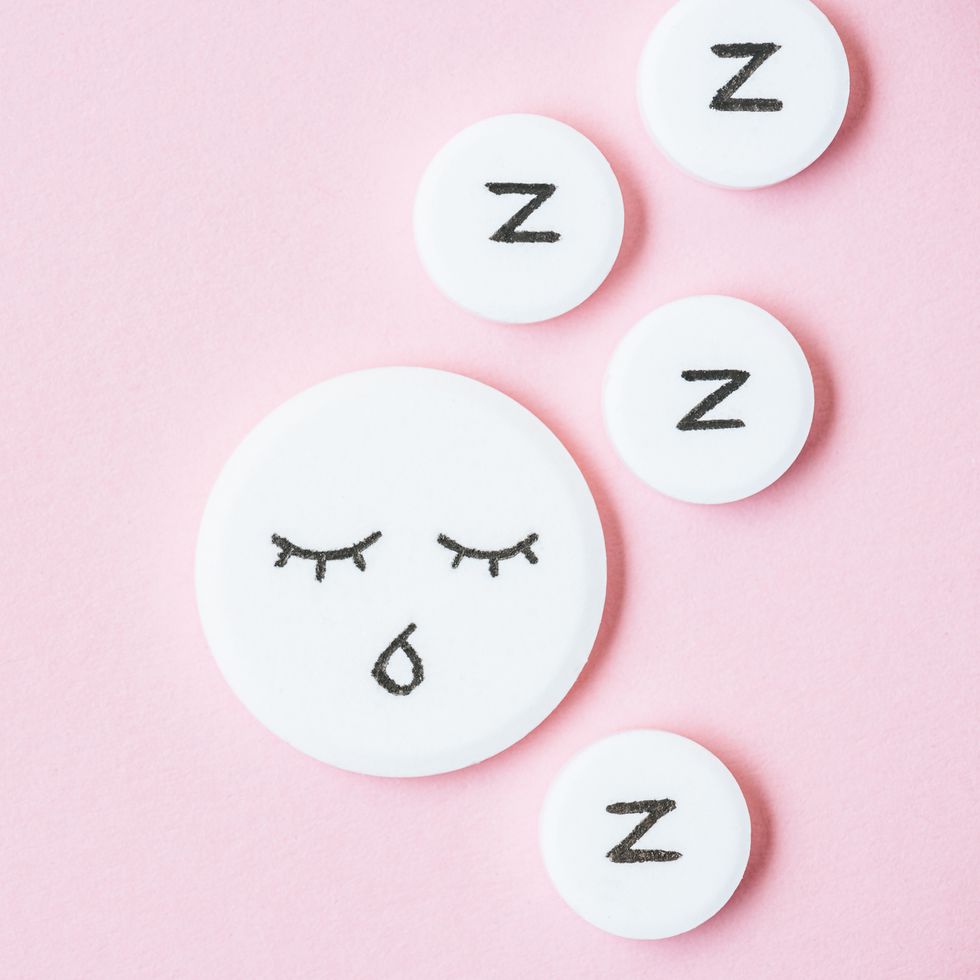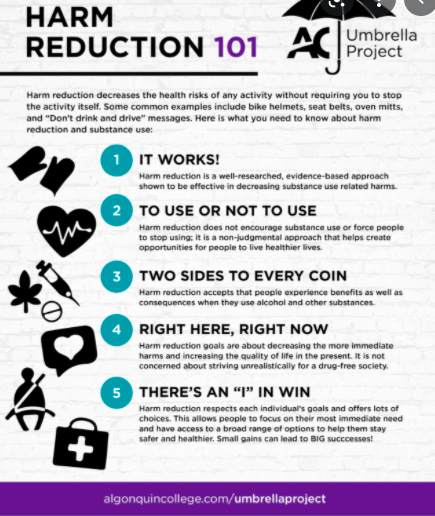Xannies, tictacs, bars, oh my! All the ins and outs of benzodiazepines (benzos) and z-drugs! Commonly used prescription drugs for anxiety and insomnia, and are also used recreationally without a prescription. Even when they’re prescribed, they still have unique risks! Benzos have been infiltrating the illicit drug trade, increasing the risk of overdose and uncomfortable side effects. This piece covers the differences, dosages and routes of administration and other harm reduction strategies to keep you and your friends as safe as possible.
Benzodiazepines:
Benzos are tranquilizer drugs. Tranquilizers are prescribed for insomnia, anxiety, alcohol & drug withdrawal, PTSD, psychotic & manic episodes. They are highly effective for managing fear, anxiety, panic, agitation and tension.

Some examples are: alprazolam (Xanax), clonazepam (Klonopin), lorazepam (Ativan), diazepam (Valium), midazolam (Versed), oxazepam (Serax), triazolam (Halcion), etc.
- Some common slang names for benzodiazepines include: bars (refers to Xanax bars), footballs (Xanax, typically the 1mg pills that are in small football shaped pills), kpins (Klonopin), hulks (green pressed/counterfeit Xanax bars), pressies (any pressed/counterfeit pills), ladders (Xanax), xannies (Xanax), candy, downers (refers to any drugs that are sedating), vallies (Valium), school busses (yellow pressed/counterfeit Xanax bars), tranks/tranqs
Tips:
- They’re prescribed as pills, and they are meant to be swallowed.
– Snorting benzos does not enhance their effects, and can be quite unpleasant given many benzodiazepines, particularly Xanax, have a very bitter taste. Additionally, snorting pills can be very dangerous given the fillers- which can build up in the nose and create complications and damage the mucosal membrane. - Taken with or without food.
- Avoid other depressants such as alcohol, GHB, Z drugs and opioids to avoid risk of overdose.
- Encourage the production of GABA. GABA is gamma-aminobutyric acid. This is a naturally occurring neurotransmitter in our brains that allows for feelings of sedation and calmness.
History
Benzodiazepines were first developed in the 1950s-1960s by Leo Sternbach, a chemist working for the company Hoffman La-Roche; now known as Roche Holding AG. He accidentally created and came across chlordiazepoxide (Librium), a benzodiazepine derivative. By 1955, it was released and branded to the public. Partly why benzodiazepines were sought after were due to the need for safer replacements to barbiturates- similar depressant drugs with significantly higher rates of addiction and overdose.
Effects can include:
- drowsiness, lightheadedness, memory loss, anxiety cessation, relaxation, disinhibition, slurred speech, relaxed muscles, compulsive redosing, aggression and irritability, weakness, poor coordination, confusion, euphoria, rebound anxiety, rebound insomnia and anxiety, feelings of depression, headache, nausea, blurred vision, change in appetite.
Durations:
- Fast acting: Versed and Halcion are fast acting, meaning within approximately 4-6 hours it will be excreted from your body.
- Intermediate acting: Klonopin, Ativan and Xanax are examples of intermediate acting benzodiazepines. This means they are fully excreted from the body within 16-60 hours (depending on the drug).
- Long acting: Valium is long acting, meaning it takes anywhere from 30 minutes to 2 hours to begin to work- but they remain in the body for significantly longer than other benzodiazepines (48-148 hours after consumption!).
*The amount of time that a drug remains in the body does not determine how long the effects will last. Most benzodiazepine effects can only be felt for 6-12 hours (most commonly). It is important to know a drug’s half life, because, for example, if you’ve taken Klonopin the night before, and then choose to drink alcohol the next day, you have a higher risk of overdose, because the benzodiazepine has not fully left your system yet.
Typical medical dosages:
- Valium: 2mg to 10mg.
- Xanax: 0.25 to 2mg.
- Klonopin: 0.25 to 2mg.
- Ativan: 0.5mg to 2mg.
- Versed: 1-3mg. The difference here is that Versed is used intramuscularly or intravenously for surgeries.
- Serax: 10 to 30mg.
- Halcion: 0.125mg to 0.25mg

If you’re taking benzos, consider writing down your dose on a piece of paper so you know how much you’ve taken in case you forget, or end up compulsively redosing. You can also use a pill box and set aside pre-dosed amounts.
- Benzodiazepines all vary in potency. For example, Ativan is approximately half the potency of Xanax and Klonopin. Valium is around ten times weaker than Xanax. Here are two calculators to compare dosages between benzodiazepine drugs. Please keep in mind everyone’s physiology is different, and these conversion calculators are not 100% accurate.
Benzos are usually prescribed for no longer than 2 weeks at a time to avoid addiction and physical dependence.
Z-Drugs:
Z Drugs are medications that are prescribed for sleep; also known as sleeping pills, or sedatives. They are used for insomnia. They help induce sleep and reduce muscle tension and wakefulness before bed.
Examples include: eszopiclone (Lunesta), zopiclone (Imovane), zaleplon (Sonata) and zolpidem (Ambien).
Slang: zims/zimmies/zimmers (Zopiclone), a-minus (Ambien), tictacs, sleepeasy, and forget me pills.
Tips:
- Like benzodiazepines, Z drugs come as pills, and they are meant to be swallowed.
– Snorting Z drugs does not enhance their effects, and can be extremely unpleasant given that Imovane has a very intense metallic taste to it, which can coat the nose and throat, leading to prolonging the taste of it for significantly longer. - They can be taken with or without food, although food can delay the time they take to work substantially.
- As with benzodiazepines, it is important to avoid other depressants when taking Z-drugs, such as alcohol, GHB, benzodiazepines and opioids. Z drugs also work in a similar fashion to benzodiazepines, by increasing the activity of GABA.
History
Z drugs emerged in the 1980s and 1990s- Imovane coming out first after being approved by the British National Health Service. Followed by Ambien, which was approved by the pharmaceutical company, Sanofi.
Possible effects: sedation, anxiety relief, sleep induction, muscle relaxation, euphoria, headache, dry mouth, metallic/bitter taste, hallucinations, sleep walking, dreamlike states, poor coordination, blurry vision, rebound insomnia, compulsive redosing, sleep walking, feelings of depression, memory loss, lowered inhibitions, change in appetite.
Typical medical dosages:
- Imovane: ranges from 3.75mg to 7.5mg.
- Ambien: 6.25mg to 12.25mg
- Lunesta: 1mg to 3mg.
- Sonata: 5mg to 20mg.
Like benzos, if you’re taking Z drugs, consider writing down your dose or using a pill box to avoid overdoing it.
For the same reasons as benzodiazepines, Z drugs tend to only be prescribed for short term use, no longer than 2 weeks, or for an as needed basis- to avoid physical dependence and dangerous withdrawal.
Potencies between z drugs:
All Z drugs vary in potency. Finding a calculator link for Z-drugs is more difficult than for benzodiazepines. Here is a chart that outlines the equivalent doses between various depressant drugs.
What are the similarities:
- Both types of drugs (benzodiazepines and Z drugs) produce feelings of sedation, sleepiness, disorientation, dizziness, cravings and anxiety relief as they work on GABA.
- They may cause a hangover-like effect the following day; grogginess, memory loss, headache, dry mouth, bitter taste in mouth, sleepiness.
- Both have addiction potential.
- Both should be avoided with other depressants to prevent overdose.
- Blacking out can be dangerous, and blacking out can arise from compulsive redosing, combining these drugs with others, and genetic predisposition.
- Both drugs can cause risky withdrawals.
- Elderly patients, if taking either of these drugs for extended periods, experience exacerbated dementia and cognitive deterioration.
What are some of the differences between the two:
- Benzodiazepines are suitable for daytime use, as they may be less sleep inducing than their Z drug counterparts. Z drugs are prescribed to be taken before bed, whereas benzodiazepines can be taken any time.
- Z drugs may cause hallucinations if the person takes them and then forces themselves to remain awake.
- Benzodiazepines have been noted to have a slightly higher risk of addiction potential compared to Z drugs.
Long term effects and other risks of using benzodiazepines & Z-drugs:
- Risk of withdrawal due to physical dependence.
- Withdrawal symptoms include: tremors, tingling sensations in extremities, anxiety, insomnia, sweats, psychosis, irritability, seizures, changes in appetite and sex drive, depression, mood swings, and cravings for the drug. Drugs that work on GABA (such as benzodiazepines, Z drugs, alcohol and GHB) have the most risky withdrawal symptoms due to their risk of seizure and long duration.
- Withdrawal symptoms typically appear anywhere from 6-24 hours after the last dose. These symptoms can then persist for several days, weeks and/or months.
- PAWS stands for post acute withdrawal syndrome; and it characterizes symptoms such as cravings for the drug, and depression- which may last long after the acute withdrawal symptoms have ended. This includes up to several years after.
- Kindling: refers to the phenomena where the increased number of times a person experiences withdrawal from a particular drug, the more intense their withdrawal symptoms will be. Over time, their risk of experiencing extreme withdrawal is heightened if repeatedly withdrawing off of these drugs.
Harm reduction
- Take Z drugs and/or benzos on their own rather than together or with other depressants. (i.e; opioids, GHB, alcohol).
- To avoid physical dependence, take these drugs only as needed and/or short term (no longer than 2 weeks).
- If you are using benzodiazepines and Z drugs that you’ve bought from other people, try and get your drugs tested to ensure they’re free of contaminants such as levamisole, acetaminophen and psychoactive drugs like fentanyl, carfentanil, caffeine, etc.
- Have naloxone on you in case of an opioid overdose! Here’s a link on where to find free naloxone in Ontario.
- Carry condoms and lube in case you choose to have sex. Your inhibitions and sex drive might change when under the influence of Z drugs or benzodiazepines.
- If you’ve been taking Z drugs and/or benzodiazepines for extended periods of time regularly, be sure to taper when you’re stopping. Do not quit cold turkey to avoid risk of seizure. Slowly reduce your dose over time to allow your body to become accustomed to the lower doses. If possible, consult with a doctor to ensure your taper is safe, and not abrupt.
- Focus on set and setting to ensure a more enjoyable experience. Set refers to the mindset that the person consuming the drugs may be in. Consider your mood, physical health and mental stress levels. Setting refers to physical and social environments. This can include your surroundings such as where you may choose to take the drugs; is it comfortable and cozy? Are there potentially hazardous objects around? Is there something that trips you out? As well as the people who are around you- or not. Are you alone? Are you around people you trust? Consider all these factors and try to get as comfortable and confident as possible prior to consuming substances, especially those you may not have as much experience with.

Resources to get help if you’re struggling to quit or cut down:
Aboriginal Service
Concurrent Addictions Inpatient Treatment Services
Concurrent Outpatient Medical and Psychosocial Addiction Support Services
Drug Treatment Court Services
Medical Withdrawal Unit
Narcotics Anonymous
Rainbow Services
SMART Recovery
Substance Abuse Program for African & Carribean Youth
Substance Use Service at Women’s College Hospital
Youth Addiction and Concurrent Disorders
Sources used/additional info:
https://clincalc.com/Benzodiazepine/
https://www.mdcalc.com/benzodiazepine-conversion-calculator
https://www.rxlist.com/benzodiazepines/drug-class.htm
https://www.medicalnewstoday.com/articles/262809
https://www.fda.gov/consumers/consumer-updates/taking-z-drugs-insomnia-know-risks
https://www.sciencedirect.com/topics/neuroscience/z-drug
https://www.frontiersin.org/articles/10.3389/fnins.2020.599812/full
https://en.wikipedia.org/wiki/Nonbenzodiazepine#:~:text=Z%2Ddrugs%20emerged%20in%20the,Sanofi%20with%20zolpidem%20(Ambien).
https://pubmed.ncbi.nlm.nih.gov/24007886/#:~:text=In%201955%2C%20Hoffmann%2DLa%20Roche,(diazepam)%20followed%20in%201963.
https://pubmed.ncbi.nlm.nih.gov/24007886/
https://www.ncbi.nlm.nih.gov/pmc/articles/PMC3657020/#:~:text=Z%2Ddrugs%20exert%20their%20effects,type%20A%20receptor%20as%20benzodiazepines.
https://www.medicalnewstoday.com/articles/262809#:~:text=Benzodiazepines%20work%20by%20enhancing%20the,stimulating%20or%20a%20calming%20effect.
https://physicians.utah.edu/echo/pdfs/sedative-hypnotic-equivalency-chart.pdf
https://americanaddictioncenters.org/benzodiazepine/length-of-withdrawal
https://www.rxlist.com/valium-drug.htm
https://reference.medscape.com/drug/seizalam-versed-dsc-midazolam-342907
https://www.mayoclinic.org/drugs-supplements/oxazepam-oral-route/proper-use/drg-20072267
https://www.drugs.com/dosage/triazolam.html
https://reference.medscape.com/drug/halcion-triazolam-342912
https://www.rxlist.com/ativan-drug.htm
https://www.mayoclinic.org/drugs-supplements/clonazepam-oral-route/proper-use/drg-20072102
https://www.drugs.com/dosage/sonata.html
https://www.rxlist.com/lunesta-drug.htm
https://www.mayoclinic.org/drugs-supplements/zolpidem-oral-route/proper-use/drg-20061195
https://healthycanadians.gc.ca/recall-alert-rappel-avis/hc-sc/2014/42253a-eng.php
https://americanaddictioncenters.org/benzodiazepine/length-of-withdrawal
https://www.medicalnewstoday.com/articles/benzo-withdrawal
Written by Xeomë at Trip! Project